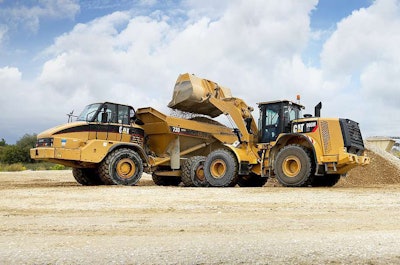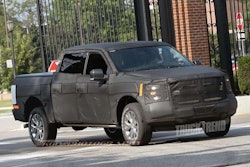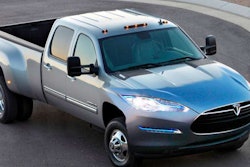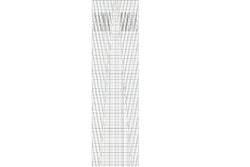 The Cat 966M XE carries on the XE features announced in the K Series.
The Cat 966M XE carries on the XE features announced in the K Series.Caterpillar has introduced its new M Series wheel loaders, a lineup that includes the 972M XE, which is joining the 966M as an XE designated model.
In addition to the XE models, the M Series will include an additional size, the modified 12-ton 982M, plus upgrades to the 950, 962, 966, 972 and 980 size machines.
Cat will launch the new loaders into the marketplace throughout 2014.
Caterpillar calls the M Series medium wheel loaders and they are the fifth generation machines in the tiered regulation environment, which started with the Tier 1 G Series, says Bill Campbell, senior market professional. With the exception of the XE models—which offer 25 percent fuel efficiency gains—Cat says the M series have 10 percent better fuel efficiency than its predecessor K Series.
First out of the gate will be the 966M and 972M, which will be in production in the first quarter of 2014. They will be followed by the 980M and 982M, expected this spring, followed by the 950M and 962M at the end of next year.
The M Series offer significant engine and transmission advancements, according to Campbell. All engines are now Tier 4 Final, and feature the Cat Regeneration System, which Cat announced allows engines above 175 horsepower to be sold in lower-regulated countries without modification.
The medium wheel loaders now have a standard lock-up clutch torque converter matched with engine power and hydraulics, part of Cat’s attack plan for improved performance and fuel efficiency. “Fuel efficiency is death by a thousand cuts,” says Campbell. “You have to do several things to accomplish it.”
The M-Series planetary transmission has a new split-flow oil system and uses multi-viscosity oil, also aimed at fuel economy.
966M and 972M
New disc-type differential locks improve tractive ability in common applications for medium-size loaders: heavy construction, aggregates, sand and gravel and batch plants. The 966M and 972M come standard with front axle differential locks, manually activated by a switch on the cab floor. Fully automatic front and rear axle diff locks are optional, and operate by measuring differences in axle speeds, requiring no operator input to activate.
Bevel gear shrouds on the axles reduce churning losses from rotating components. The axles also have external caliper disc parking brakes mounted to the input shaft of the front axles, which Cat says offer higher capacity than the drum brakes used on the 966K and 972K.
 Cat says it gave the M Series steps a more staircase feel, increasing the step angle to 15 degrees.
Cat says it gave the M Series steps a more staircase feel, increasing the step angle to 15 degrees.A main mono-block hydraulic valve on both machine sizes weighs less and has 40 percent fewer leak points than predecessor machines. The new ride control system now has two accumulators, allowing it to be more effective over a greater payload range. With the addition of a second remote valve, auxiliary third and fourth hydraulic functions can be easily added. New larger displacement hydraulic implement pumps continuously and automatically respond to operator performance preferences.
Operators can remotely unlatch the door while on the ground, which activates a gas strut to swing open the door. In addition, the angle of the steps up to the cab has been increased to 15 degrees, giving a more stairlike quality to cab entry.
Inside the cab, the lower glass panel has been extended to improve visibility to the left side of the machine. Larger convex mirrors improve rear visibility. A color touch screen display received a thumbs up in customer demos, says Campbell. “We’re now all used to touch screens and we found great acceptance with this with our field follow operators,” he says.
The new Cat Connect Solutions system allows users to access several pieces of machine data, including fuel consumption, average fuel rate, total idle time, fuel consumed at idle and total operating hours.
Expansion of the XE
Cat sized the 300-horsepower 972M XE to get the attention of North American users, offering more oomph than the 277-horsepower 966M XE. The first XE model, the 966K XE, received one of Equipment World’s 2013 Innovation Awards for its 25 percent fuel efficiency gains, compared to machines with traditional torque converters.
With a bucket capacity range of 3.75 to 13 cubic yards, the 972 M XE internals mirror what was introduced with the 966K XE, using an integrated Cat continuously variable transmission system works with a hydraulic pump and motor (variator unit). The variator unit is designed to provide smooth and continuous gear ratio change between engine speed and machine speed while greatly reducing the heat load generated by the drive train when the machine is under heavy load. The continuously variable gear ratio of the variator also enables the engine to run at a more efficient operating range independent of machine ground speed, Cat says.
In addition, XE machines have a simplified two-pedal design, which Cat informally labels “go” and “stop.” Machine speed is modulated by the right “go” pedal, and rimpull and brakes are modulated by the left “stop” pedal.
According to Campbell, the XE machines have an average premium of 7 percent over the cost of a standard unit, a cost Cat says can be returned in fuel savings within three years for high fuel use applications.













